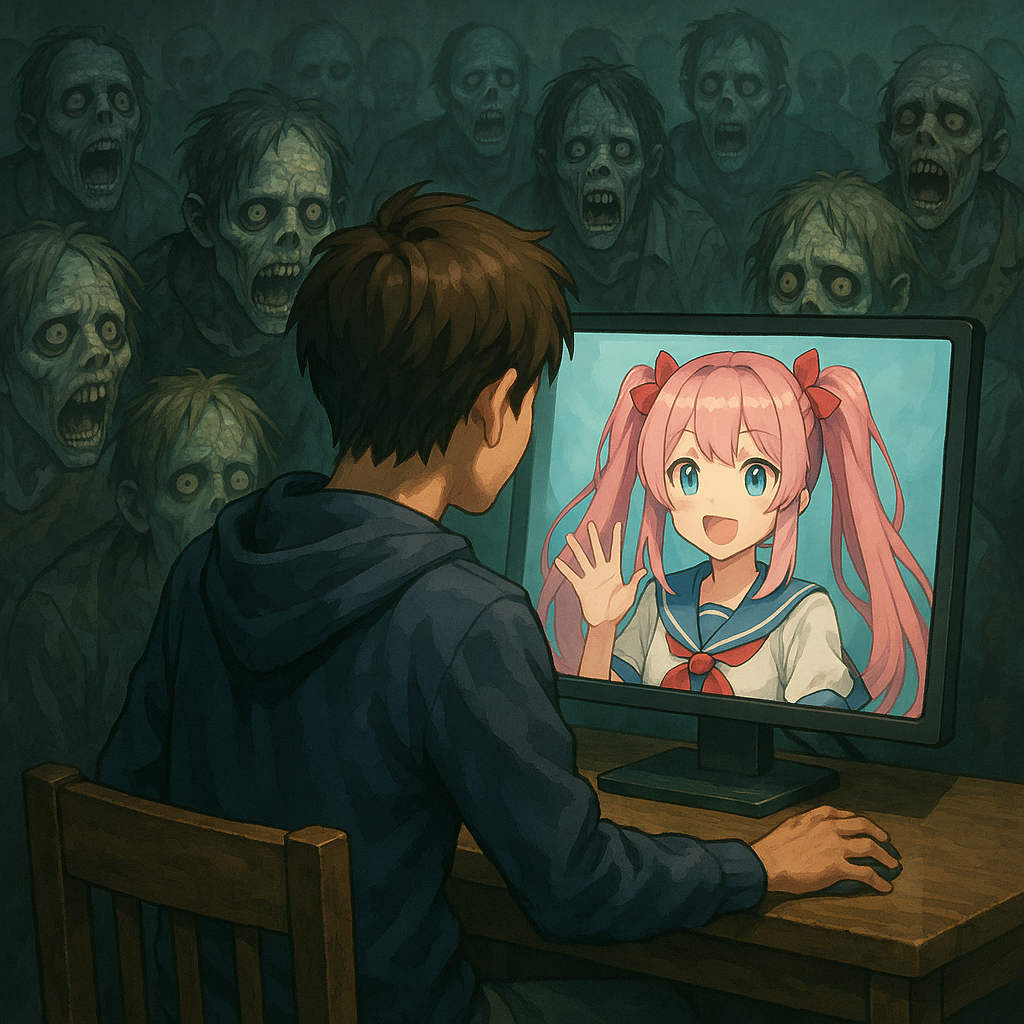Vtubers have become a part of mainstream culture in Japan. They appear in corporate ads and even in children’s magazines. But only a few years ago, things were very different. Back then, people mocked them as “digital cabaret girls for nerds” or even “caregivers for the socially disabled.”
This article explores why a subculture once dismissed as “creepy” has now entered the mainstream—and what this shift reveals about the deeper psychology of human behavior.
Vtubers Were Once Rejected Because They Were Easy to Look Down On
A Vtuber is a livestreamer who performs as an anime-style avatar, synchronizing their real movements with a virtual character. Nobody remembers exactly who started it or when, but the early days were filled with ridicule. Every time Vtubers trended on social media, the same comments appeared: “Who would throw money at a cartoon girl? Gross.” “Only losers obsessed with anime would watch this.”
As an old-school otaku myself, that atmosphere was all too familiar. Even though otaku culture has become more accepted today, it began as an outsider movement. Some now try to rewrite history by claiming “anime was never looked down on,” but anyone who lived through it knows that’s false.
In short, Vtubers were rejected because they came from the same lineage—an easy target to mock, a group that made others feel superior. Looking down on something provides psychological relief; it reinforces one’s sense of normalcy. Vtubers were the perfect outlet for that.
The Real Pleasure Vtubers Offer
Yes, many Vtubers play cute anime girls, and yes, fans often send them donations to get noticed. On the surface, the setup resembles a virtual cabaret club. But that interpretation misses the real point.
The true allure of Vtubers isn’t about cute characters, escapism, or fleeting moments of attention. It’s about the comfort of surrendering thought and melting into the crowd.
Modern life forces us to make countless decisions every day. Constant exposure to digital information drains our energy. So people naturally seek spaces where they don’t have to think. For some, that’s the sauna, hiking, gaming, or gambling. But all of these require money, time, or physical effort—and when you’re exhausted, even turning on a console feels like too much.
The world of Vtuber livestreams, on the other hand, demands nothing. The streamer leads, the audience reacts with comments or emojis, and everyone drifts along the same current of shared emotion. No planning, no judgment—just participation. It’s a kind of digital meditation.
This shared rhythm resembles religious rituals or the euphoria of a live concert. It’s no coincidence that dedicated fans are often called “believers.”
The Human Herd—and the Zombie Metaphor
This feeling of merging into the group is, in a way, a form of “zombie happiness.” Zombies lose their individuality but gain absolute unity. They feel no pain or fear; they simply wander, together, in one direction.
Vtuber fans, too, connect not through rational thought but through emotional synchrony. In that moment, loneliness and overthinking fade away. From the outside it may look mindless, but psychologically, it’s actually a form of recovery behavior—a way for humans to heal the fatigue that comes from being overly rational, isolated individuals.
Conformity: Society’s Emotional Painkiller
In social psychology, this impulse to align with others is called conformity. Solomon Asch’s famous experiment demonstrated that when people around you give an obviously wrong answer, most participants will still follow along. Sometimes, avoiding isolation feels more important than being right.
Vtuber culture taps into the same mechanism. Even details like fan nicknames—such as “Miko-P” (for fans of the clumsy shrine-maiden Vtuber Sakura Miko) or “Nousagi” (the “wild rabbits” who follow Usada Pekora)—encourage people to adopt a shared identity. By calling themselves these names, fans become part of a collective, shedding individuality for belonging.
For instance, Sakura Miko’s fans often “play along” by teasing or gently rebelling against her mistakes. This playful dynamic creates a complementary relationship between performer and audience, strengthening the sense of unity. When people act in sync with others, the brain releases dopamine, rewarding them with a brief sense of safety and satisfaction. In this way, conformity becomes a social painkiller—soothing loneliness, if only for a while.
Between the Individual and the Group
The essence of Vtuber culture isn’t technology or character design—it’s the expression of our social instinct as human beings. We are torn between two drives: the desire to merge with the group, and the need to stand alone as individuals.
Vtuber streams constantly blur that boundary. That’s why dismissing fans as “escapists” or “dependent” misses the mark. Through Vtubers, people are rediscovering the rhythm between community and solitude—a rhythm essential for psychological balance.
If you find yourself drawn to a Vtuber, it’s not a weakness. It’s an act of mental self-care in an overstimulated world. To join the crowd and then step back into yourself—that, perhaps, is what it means to live as a human being, not a zombie, in this era.
Postscript
A friend of mine, once a burned-out office worker, recently fell headfirst into the Vtuber world. He now attends Hoshimachi Suisei’s concerts, buys Hololive cards by the box, and even invests in the company’s stock. His evenings are spent drinking while watching four different Vtuber streams at once—his new favorite form of therapy.



コメント